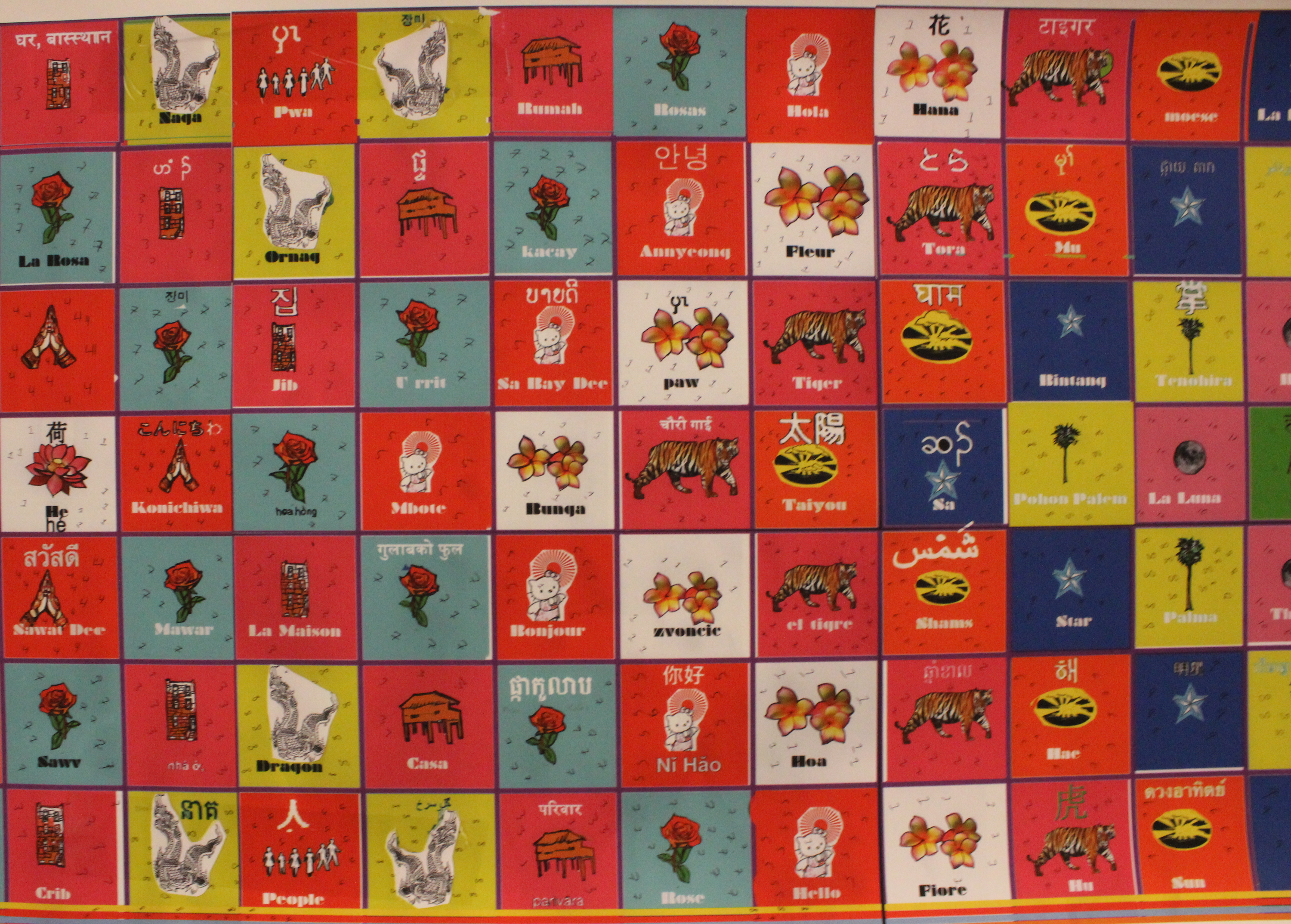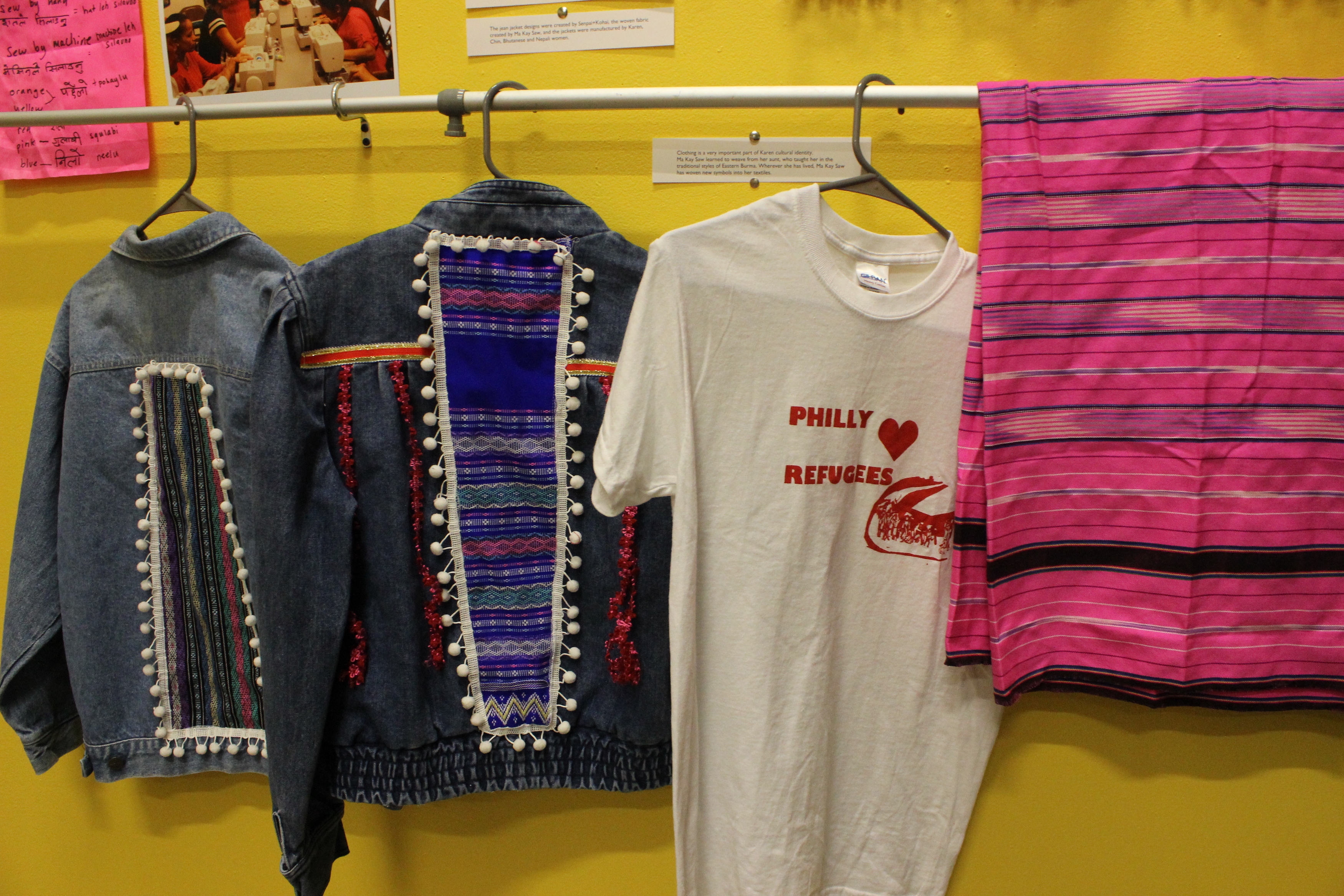
A two-way exchange of cultural resources at Southeast by Southeast in Philadelphia
Above: Prints by Shira Walinsky.
An earlier version of this post incorrectly attributed the design of the Language Lab mural.
Anyone who’s been to South Philadelphia knows that many of its denizens are immigrants, and that of the immigrants who live in small communities within the city, many hail from Southeast Asia. In the spirit of promoting relationships between neighbors, Asian Arts Initiative in Chinatown North has furthered an ongoing dialogue between longtime Philadelphians and some of the city’s newer faces. This Knight Arts grantee is in the midst of spotlighting Southeast by Southeast, an outreach program for recent immigrants, largely from Bhutan and Burma, who began arriving in Philadelphia in increasing numbers around 2008. Founded in 2011 by Shira Walinsky, Melissa Fogg and Miriam Singer as a partnership between Lutheran Children and Family Services and the City of Philadelphia Mural Arts Program, the six-month-long pop-up storefront created for the project is still going strong.
Helping newly settled families adjust to life in the United States, Southeast by Southeast operates as a community space in which recent immigrants and refugees can share stories, gain access to social services, learn English as a second language, and collaborate on artist projects that, in turn, give back to the communities where they now reside. The new Philadelphians to which the program caters have faced a great deal of hardship in their countries of origin and on their journey toward a new home. Bhutanese communities were driven into camps in neighboring Nepal for 20 years, and Burmese minority groups were forced into jungles and eventually refugee camps in Thailand and Malaysia. Although Philadelphia is a “better” place to be, it is not without its own share of difficulties, and the aim of Southeast by Southeast is to help ease the transition into life in the urban United States.

Shira Walinsky, “Members of the Karen, Chin, and Nepali Bhutanese community.” At the Asian Arts Initiative gallery, the space is a bustle of images and videos made by members of these immigrant and refugee communities, as well as by Walinsky herself. For her part, Walinsky created a series of prints depicting the individuals, landscapes and languages of the transplanted communities she has had the pleasure of connecting with here in Philly. She says that getting to know the families and individuals through the context of art and by teaching English as a second language have been some of her favorite parts of the process.
“I have learned so much from working with refugee families. There is a collective spirit where families come together to learn help each other,” she says. “I’ve been astounded by the adjustments refugee families have to go through. Most of those I have met were from rural backgrounds, so adjusting not only to language and culture, but a city, seems overwhelming.” These adjustments are especially evident in the photo and video documentation of refugee families’ lives. When given a camera to capture their lives from their own perspective (the first time some have ever used a camera), it becomes striking just what a change this relocation process is. One photo by Mana Shary, for instance, shows a sight that is beyond common for Americans: a fire station. The caption reads: “When I saw these fire trucks I was surprised, there are not fire trucks in the camp. People helped each other to put out fires.”

Language Lab mural.
Beyond the glimpses of family and a new environment paired with personal stories, there are collaborative artworks on display as well, such as the Language Lab mural. The small version in this show is a section of the full scale Mural Arts piece at 7th and Moore Streets, which was completed this summer. Its colorful grid reveals common images like tigers, cities and flowers, along with translations in a number of different languages.
Skill sharing is also an important part of the Southeast by Southeast program. Ma Kay Saw, a weaver from the Karen ethnic group in Burma, has a selection of her intricately woven and radiantly colored fabrics on view, some of which are given a contemporary take by being attached to denim jackets. Artists like Ma Kay Saw have the opportunity to feature their creations in demonstrations and exhibitions, along with the opportunity to sell the work. Her identity is represented in the exquisite clothing she weaves, some of which she carried all the way from Thailand. In this way, she is given the opportunity to use traditional forms to benefit herself and her family, to further her own culture in the United States, and offer the rest of us a glimpse of who she is and where she is from.

Jackets designed by Senpai + Kohai with fabric woven by Ma Kay Saw and jackets manufactured by Karen, Chin, Bhutanese and Nepali women. The two-way street of artistic and narrative exchanges that stem from Southeast by Southeast is a gift beyond words for all those involved. There is no doubt that the families starting over in Philadelphia have benefited immensely from the program, and it is evident that those of us already living here have an awful lot to learn from them as well.
Recent Content
-
Artsarticle ·
-
Artsarticle ·
-
Artsarticle ·
